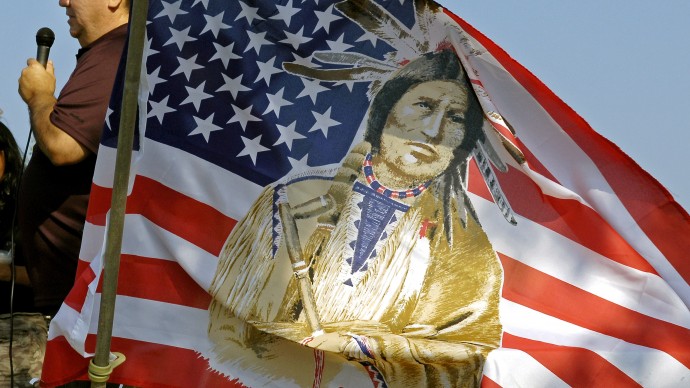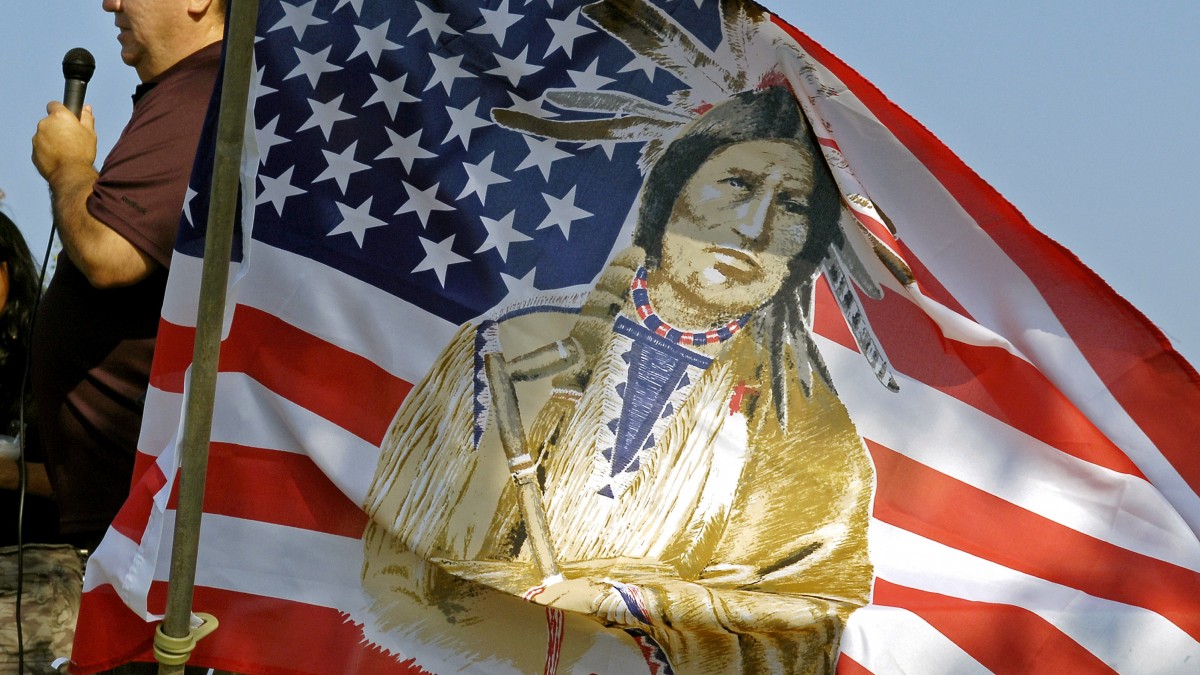
Update | By: Trisha Marczak Following an investigation, the United Nations is calling on the United States to turn over the Black Hills to Native Americans, citing the land was originally granted to Native Americans through its treaty with the U.S. government.
James Anaya, the U.N. special reporter who led the investigation, took 12 days to visit with Native Americans who live on and off reservations. What he discovered was a culture that had suffered immensely, through discrimination and the lack of control over land and resources.
Anaya included in his report statistics regarding the Rosebud and Pine Ridge reservations in South Dakota, where suicide rates are the highest in the Western hemisphere. Anaya suggested that if the government were to give back land in Rosebud, it could potentially help the people of the area begin the process of returning to a healthy community.
“At Rosebud, that’s a situation where indigenous people have seen over time encroachment onto their land and they’ve lost vast territories and there have been clear instances of broken treaty promises,” he said in an interview with The Guardian. “It’s undisputed that the Black Hills was guaranteed them by treaty and that treaty was outright violated by the United States in the 1900s. That has been recognized by the United States Supreme Court.”
While Anaya had planned to meet with members of Congress, he said his requests were not granted.
(MintPress)-The United Nations launched its first in-depth investigation Monday into the plight of nearly three million indigenous peoples in the United States, including Native Americans, Alaskan Natives and Native Hawaiians.
Over the next week and a half, James Anaya, United Nations Special Rapporteur on Indigenous Peoples, will meet with federal and state government officials, as well as with indigenous nations and their representatives, to evaluate the human rights situation of indigenous groups in the U.S.
“I will examine the situation of the American Indian/Native American, Alaska Native and Hawaiian peoples against the background of the United States’ endorsement of the United Nations Declaration on the Rights of Indigenous Peoples,” said Anaya, professor of human rights law at the University of Arizona.
“My visit aims at assessing how the standards of the Declaration are reflected in United States law and policy and identifying needed reforms and good practices,” he said.
UN Declaration on the Rights of Indigenous Peoples
The United Nations Declaration on the Rights of Indigenous Peoples is a non-binding treaty that reflects the UN’s commitment to protecting human rights and combating discrimination of over 370 million indigenous people worldwide.
The declaration ensures the individual and collective rights of indigenous peoples, including rights to culture, identity, language, employment, health, education and more.
Among the various articles of the declaration are the right to self-determination; the right to a nationality, the right to maintain distinct political, legal, economic, social and cultural institutions while maintaining the right to participate in the institutions of the State; and the right not to be subjected to forced assimilation or forced removal from territories.
After two decades of debate, the declaration was adopted by the General Assembly in 2007 with the support 143 countries. It was not signed by the U.S. until three years later. Canada, New Zealand, and Australia also opposed the treaty initially, but have since reversed their positions.
President Barack Obama signed the declaration in 2010 following National Native American Heritage Month, during which he reiterated his Administration’s commitment “to supporting tribal self-determination, security and prosperity for all Native Americans.”
The President recognized that, “[w]hile we cannot erase the scourges or broken promises of our past, we will move ahead together in writing a new, brighter chapter in our joint history.”
Obama claims commitment to Rights of Indigenous Peoples
The President’s decision to sign the UN Declaration on the Rights of Indigenous Peoples falls in line with the Obama Administration’s initiatives to promote government-to-government relationships and improve the lives of indigenous peoples.
Since taking office in 2009, President Obama has held several White House Tribal Nations Conferences to improve communication with the 565 federally recognized Indian tribes in the U.S. Additionally, the Federal Emergency Management Agency (FEMA) announced in 2011 its support for amending federal law to allow federally recognized Indian tribes to make emergency and disaster requests directly to the President.
The Obama Administration also included special provisions for Native Americans in the Affordable Care Act, provided over $3 billion to economic development in tribal communities, and signed the Tribal Law and Order Act (TLOA), which aims to make communities safer.
Just last week American Indian tribes began receiving money from the federal government in a $1 billion settlement over tribal trust claims dating back as far as 100 years. A $3.4 billion settlement over separate tribal trust claims was reached in 2011 as well following 15 years of litigation.
Despite progress made by the Obama Administration to address the rights of indigenous peoples, Native Americans remain among the most marginalized groups of people in the United States, experiencing high suicide rates, alcoholism and environmental racism as a result of centuries of oppression.
Tom Rodgers, president of Carlyle Consulting of Alexandria, VA and Blackfoot tribal member, reports that only 36 percent of males in high-poverty Native American communities have full-time, year-round employment. The annual unemployment rate on the Blackfoot Reservation in Montana is 69 percent, nearly three times as severe as during the Great Depression.
As for Obama’s alleged success in settling tribal trust claims, the Supreme Court is expected to hear oral arguments today on two separate cases challenging whether the US can claim immunity in similar lawsuits that challenge U.S. involvement in Indian tribal land.
Extending the reach of the UN Permanent Forum on Indigenous Issues
The UN Special Rapporteur on the Rights of Indigenous Peoples has responded to requests for help from Native Americans in the U.S. in the past, including a request from the Seneca Nation of Indians last year seeking help in a continuing taxation dispute with New York state.
The New Jersey Sand Hill Band of Lenape and Cherokee Indians also sought help from the UN in 2010 when Chief Ron Yonaguska Holloway met with Anaya after giving a speech to the UN regarding his case.
However, this is the first time the United Nations has sent an independent mission to conduct an investigation solely on the state of indigenous peoples in the U.S. rather than simply responding on to requests on a case by case basis.
Previous investigative missions have mainly focused on Latin American and South American countries. In 2011, the UN investigated the situation of indigenous peoples in Costa Rica and the effects of the mining industry on indigenous territories in Guatemala.
Other special reports and cases have focused on the state of oppression facing Aboriginal and Torres Strait Islander peoples in Australia, the exhumation of Hmong graves in Thailand, and allegations that Bedouin people are being removed from their traditional lands by the state of Israel.
The UN’s current mission will conclude with a press conference in Washington, DC on May 4th followed by a presentation to the United Nations Human Rights Council with recommendations to the US and indigenous governing bodies on how to address ongoing issues of concern to indigenous peoples.


